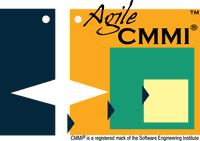Agile Project Leadership Network (APLN) Maryland Group May 15th
Posted by Hillel on May 10, 2007 in Uncategorized | Comments Off
Will the shame ever catch up with him?…
Agile Project Leadership Network (APLN) Maryland Group May 15th
Meeting
Keys to Making Agile & CMMI Compatible – speaker Hillel Glazer
You are cordially invited to attend the Agile Project Leadership
Network (APLN) Maryland Group Meeting. The meeting will be held in
Hunt Valley, MD on May 15, 2007 at PHH Arval. The reception starts
at 6 PM, the meeting will start at 7 PM. There is a $15 cost to
cover the food. Plan to bring a friend. We ask that you let us know
if you plan to attend by sending an email to: aplnmd@agilemaryland.org.
Speaker: Hillel Glazer, Principal & CEO, Entinex, Inc.
Topic: Keys to making Agile & CMMI Compatible
Description: A discussion of how to make CMMI agile, and how to
appraise agile methods to CMMI. Discussion will include a hands-on
exercise to demonstrate the compatibility of Agile & CMMI on the same
team.
For details on the meeting including directions, go to our website
apln.agilemaryland.org.
Shameless Plug…
Posted by Hillel on May 9, 2007 in Uncategorized | Comments Off
Hey… anyone know anyone who wants to take Introduction to CMMI?
I’ll be delivering the class myself for a client, and they have (at this moment) 3-4 spare seats. There will only be 10 people in the class. Nice and intimate with lots of room for personalized attention and Q&A.
Normally, I refer to the Introduction to CMMI as "3 days of wrist-slitting" and *I’m* an instructor!! But that’s only if you’re stuck in a class led by Borg drones. Which — unfortunately as it may be — is a necessary evil of how the materials must be constructed. However, a class led by yours truly… weh-heh-heh-ll… that’s a different story of course!
In any case… the class is in Arlington, VA, May 29-31. You get the instruction, all the course slides and exercises, the "blue" book (CMMI® Guidelines for Process Integration and Product Improvement), continental breakfast, and of course, extra attention from *me*!
The class costs are set by my client at only 1000US$! Which is not only less than SEI and most other places, but considering that the course is BOOKED at SEI through the FALL! It’s quite a deal!
Hurry! Hurry! Hurry!
Register here.
(You pay me, I pay them.)
It’s official… (and a little value for your time)
Posted by Hillel on Apr 27, 2007 in Before and After, SEI Partner | Comments Off
Entirely for legal, insurance (read:liability) reasons, I’ve established a direct Partner relationship between Entinex and the SEI.
It means I can put this on stuff I do:

It’s true that being directly listed in the SEI’s Partner directory will have some marketing benefit since people look there for CMMI resources, but the truth is I get plenty of inquiries from other stuff I do.
It will be interesting to see if/how being listed as a Partner changes anything.
So… about Agile+CMMI.
Here’s something to think about:
Many of us are impressed when we see the “before” and “after” photos of someone who got into shape. Whether they lost weight and got thin and buff or they pumped serious iron and got big and buff, we’re equally impressed. The more the transformation the more impressive. Usually.
We’re often reminded or compelled to ask how much time elapsed in between the “before” and “after” and more easily driven to ask “how” the person did it.
Since we’re so easily impressed by these photos, and, we so readily accept that a process took place in order for the person to get from “before” to “after”, why do people (read: many developers and appraisers) have such a difficult time recognizing that if we do a “before” and “after” of development products, that what happened in-between was a p r o c e s s ?
Is there anything wrong with that sort of evidence? Could the before and after of an affected work item/product collectively be a sufficient artifact?
The answers are: NO. There’s NOTHING wrong with that. And, YES, that can be adequate evidence.
The question, then, is whether what caused the before and the after was on purpose, whether it can be defined, or managed, expected, or even predicted. That would make it evidence of process improvement. Not just that it “happened”. That a process happened is just a process. That the process happened on purpose, and the extent to which it is defined, or managed, expected, or even predicted, makes it contribute to process improvement.



